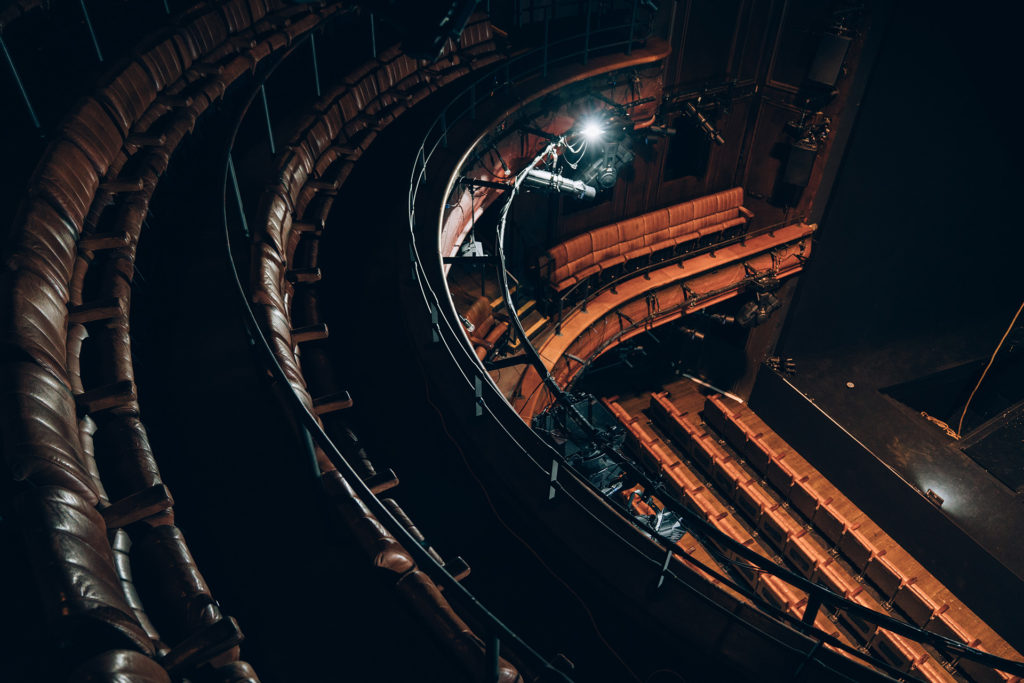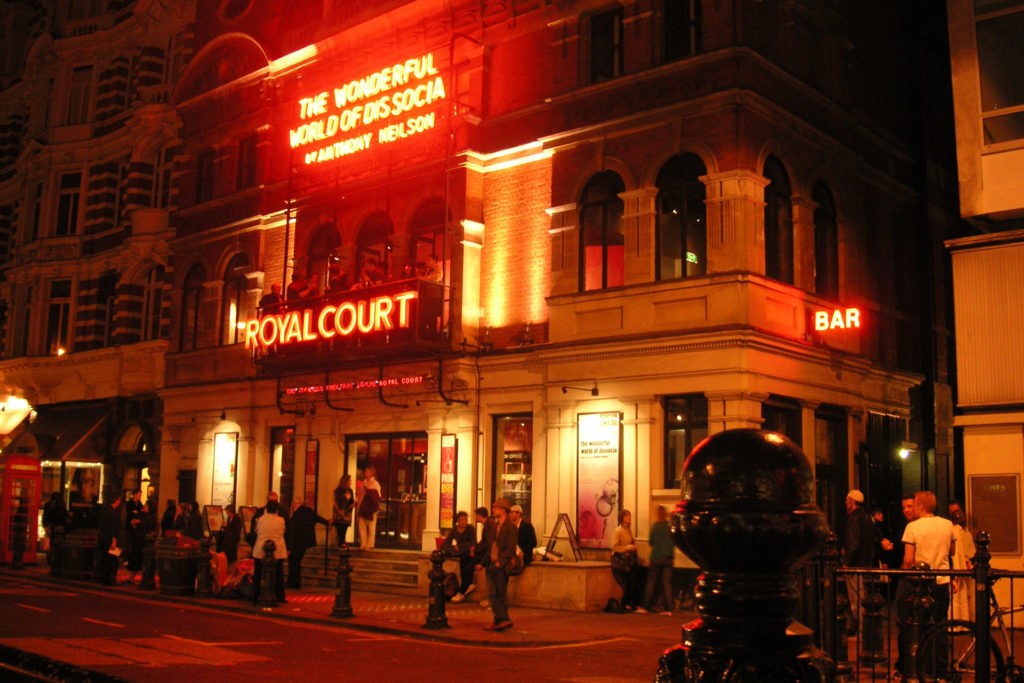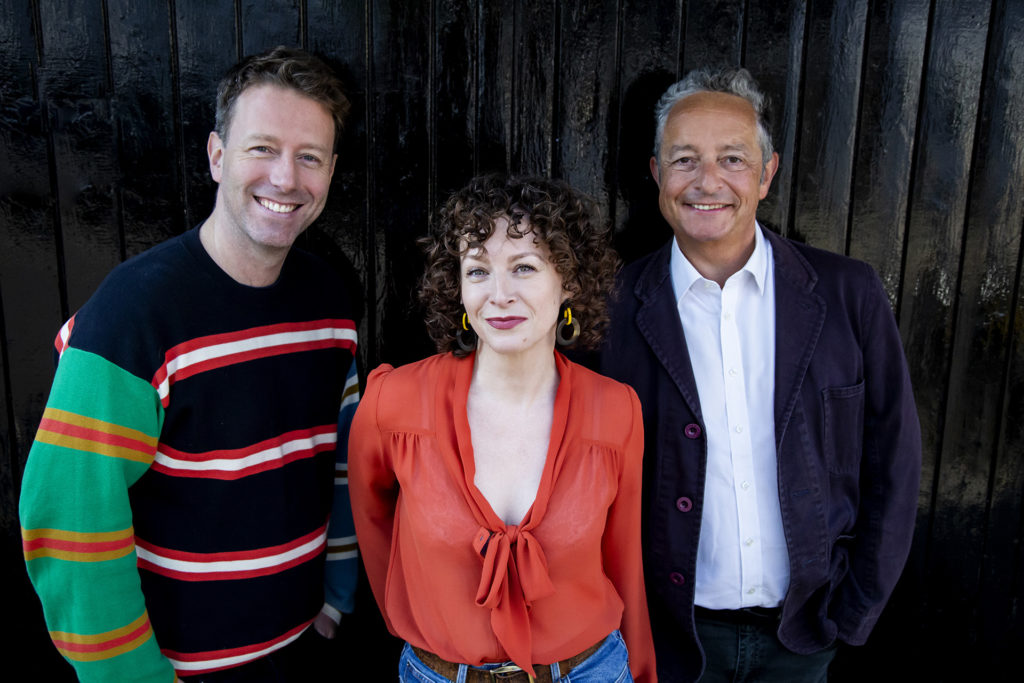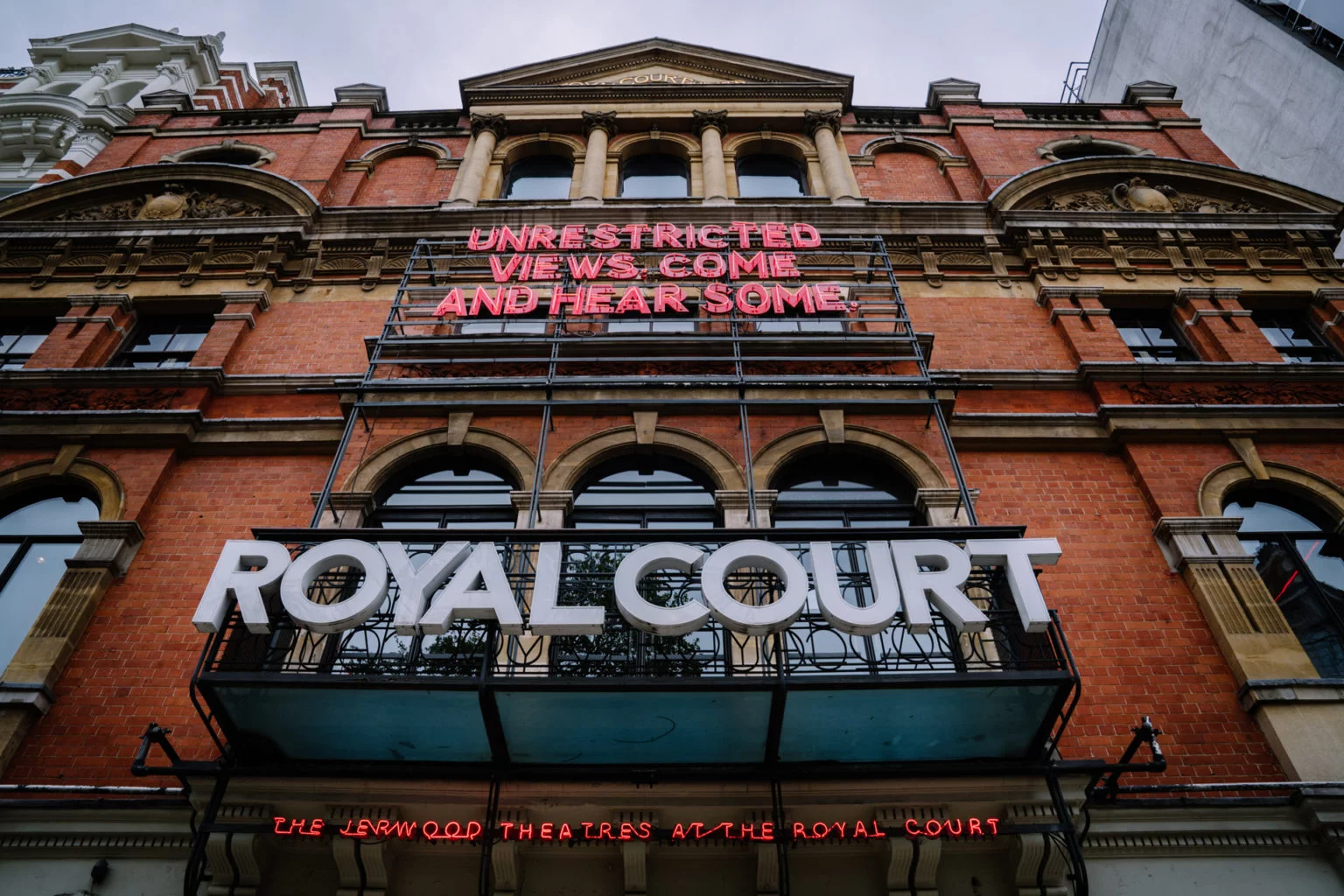This Chelsea Arts Festival venue has a storied past. The West End might be the sparkliest, busiest, even priciest theatre ticket in London, but Sloane Square houses one of the city’s most important venues. Hidden away from the hustle and bustle at the gateway to Chelsea, The Royal Court Theatre is a crucible of modern British drama – a reputation it has been building since the end of 19th century.
Today known as ‘the writer’s theatre’, the Royal Court will host a new story in September: the inaugural Chelsea Arts Festival. Before that, here’s a brief history of this illustrious venue.
A Brief History Of The Royal Court Theatre

The Early Years
The Royal Court might be a bastion of theatre today, but its roots are considerably humbler. At first known as the New Chelsea Theatre and then the Court Theatre, a quiet opening in 1870 served Victorian Chelsea and Belgravia residents with popular comedies, farces and light dramas. Actors like Arthur Cecil and John Hare are thought to have graced the stage, establishing the Royal Court’s reputation for solid (if not yet revolutionary) theatrical fare. At this time, the theatre occupied a former Nonconformist Ranelagh Chapel remodeled by Walter Emden – only to be demolished and replaced in 1888.
This new structure took the name ‘New Court Theatre’, with the design helmed by Emden with Bertie Crew in a free Italianate style, selecting the moulded, red brick exterior we know today. At this time, the capacity was almost double the Royal Court’s current capacity, welcoming up to 841 punters across its stalls, dress circle, amphitheatre and gallery.
And yet an identity was yet to be forged, floating under various managements with run-of-the-mill performances. The arrival of J.E. Vedrenne and Harley Granville-Barker in 1904, however, is considered the Royal Court’s first significant chapter – though they were only here until 1907. In this three year period, Granville-Barker (a playwright, actor and director himself) used the Royal Court to champion plays by George Bernard Shaw, including premieres of John Bull’s Other Island, Man and Superman, and Major Barbara.
It was the genesis of the Royal Court’s commitment both to new writing and to tackling contemporary social issues with the plays it puts on – albeit, at this time, within the confines of Edwardian sensibilities.
A Reconstruction – And A Reversal

It was a spark that burned bright – and died quickly. Along with Granville-Barker’s departure went the Royal Court’s avant-garde sensibilities, and a more conventional programme returned until changing interests and priorities sent the theatre into decline. By 1932, the New Court Theatre was defunct. In 1935, the theatre was even a victim of newfangled surgery we still fear today: it was converted into a cinema.
But come 1940, bomb damage would unbutton the changes – and in 1952, the New Court Theatre was reconstructed by Robert Cromie and reopened as the Royal Court Theatre under the management of Oscar Lewenstein. At this point, the capacity shrank to under 500, but it didn’t matter: the new era was about to arrive.
The English Stage Company
In 1954, Lewenstein joined forces with George Devine, Ronald Duncan and Greville Poke to found the English Stage Company (ESC) with a mission to champion plays by young and experimental dramatists. As Devine wrote in retrospect, he wanted to ‘get writers, writers of serious pretensions, back into the theatre’ following WWII, and make going to the theatre ‘part of the intellectual life of the country’. At a time when British theatre was still centred on the largely conservative West End, Devine created a space for young, alienated writers to finally be heard.
The ESC took over the Royal Court, opening in April 1956 with a production of Angus Wilson’s The Mulberry Bush, followed by Arthur Miller’s The Crucible and John Osborne’s Look Back in Anger, the latter – a searing indictment of the British class system – naturally attracting the most public attention, ushering a new era of ‘kitchen sink realism’ almost overnight.
Later premieres included Roots by Arnold Wesker, The Sport of My Mad Mother by Ann Jellicoe, A Resounding Tinkle by N.F. Simpson, and Saved by Edward Bond. Testament to the Royal Court’s commitment to pushing the envelope, the latter, featuring a controversial scene of a baby being stoned, led to the final instance of theatrical censorship in Britain before the abolition of the Lord Chamberlain’s powers in 1968.
The Writer’s Theatre

A new reputation had been set – and even following Devine’s death in 1966, the Royal Court persisted. Artistic directors like William Gaskill, Max Stafford-Clark, Stephen Daldry, Ian Rickson and Vicky Featherstone upheld Devine’s commitment to experimentation, each steering the theatre through changing landscapes.
But new writing has always reigned supreme: the ‘70s and ‘80s saw bold new voices like David Hare, Caryl Churchill, Howard Brenton and Sarah Kane move through the Royal Court, all presenting challenging and unflinching portrayals of contemporary life – and beyond. In 1973, the Royal Court even staged a rare musical, spotting the cultish potential: Richard O’Brien’s The Rocky Horror Show.
…With A Fresh Face

But like all high-traffic buildings, wear and tear would eventually set in. In the late 1990s, a substantial grant from the National Lottery and the Arts Council would help the Royal Court implement a £26 million overhaul, addressing deteriorated facilities and recurrent flooding issues. Headed up by Haworth Tompkins, the works were completed in February 2000, with the Royal Court’s entire interior rebuilt. Winning a RIBA award for their efforts, only the cherished facade and the auditorium’s core structure were untouched by Haworth Tompkins – but the renovation was sensitive and retained the Victorian charm the theatre is so beloved for.
This is when the Jerwood Theatre Downstairs really came into its own. Previously known simply as the ‘Theatre Downstairs’, the renovation increased capacity to 380 seats and improved sightlines across the proscenium arch layout. The addition of the smaller, more experimental Jerwood Theatre Upstairs only added to the Royal Court’s success and reputation for nurturing new talent.
Today, under the artistic leadership of David Byrne, the Royal Court remains resolutely committed to its founding principle: supporting and developing the next generation of playwrights. Recent success stories include Laura Wade’s Posh (2010), Martin McDonagh’s Hangmen (2015), Jez Butterworth’s The Ferryman (2017) and Mark Rosenblatt’s GIANT (2024).
And the Royal Court doesn’t just champion new writers: it creates them through acclaimed writing schemes and mentorship programmes.
What’s On At The Royal Court For Chelsea Arts Festival?

The Royal Court is one of the venues taking part in Chelsea Arts Festival in September, hosting a live recording of The London Theatre Review Podcast with a special celebrity guest, as well as much, much more still to be announced. The Royal Court will also be hosting backstage tours on Sunday 21st September which you can book now here.




